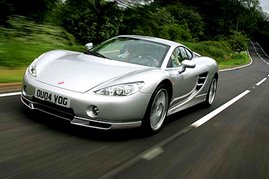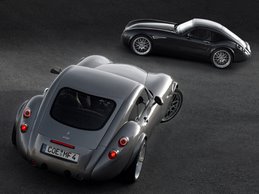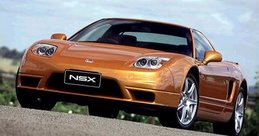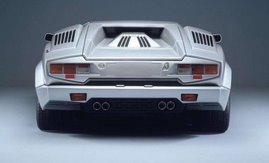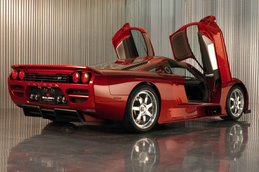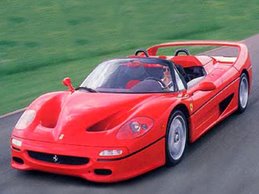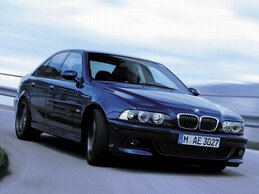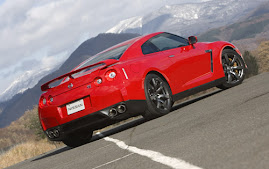Though my father is probably the most passionate automotive enthusiast I’ve ever met, he is also one of the most traditional: not only in the sense that he prefers subtle designs, but traditional in terms of how he values his purchases.
First and foremost, my father has never been one to purchase a car for the benefit of the others; in other words, the Joneses down the street do not in any way influence what he likes, and ultimately, purchases. Nor is he one who cares about the latest in the world of technology and all that subsequently follows. And last, but certainly not least, he’s not one who is hung up in the fizzling power trends. His outlook on the matter is akin to: “so long as the car has enough pull for the road, and fulfills at least 95% of my needs (roll your eyes), I’m all-game.”
What does he demand in a car, you ask? Well, even despite the fact that he’s owned a number of performance vehicles – from Supras to MR2s – his ideal automobile has most always been a comfortable luxury cruiser. Other priorities on his list are not only reliability and quality, but an exterior that is unmistakably classy, yet understated at the same time.
When it comes to his yearning for bodywork perfection, don’t even get me started. Never before have I met someone so fussy as to turn down a vehicle for reasons pertaining to repaint, dents, misaligned window chrome and what-not. Mind you, he’s not alone in this regard, as I too have inherited his anal retentive obsession in search of the perfect vehicle. However, that’s its own long and dreary story.
All of this is without even taking into account his desire for long-term ownership. Rather than seeking a new trade-in every two or three years, my father always aims to keep his purchases for a minimum of five years.
That being said, he also takes a look into the possible annoyances of his purchase, and whether he’d be sick of the vehicle long down the road of ownership. Taking these strict set of conventions into mind, for a car to truly convince him enough to purchase, he must think the world of it.
So, a few weeks ago my father and I were casually cruising around the local Acura dealer here in Vancouver (Burrard Acura) and sitting there – in all its shinning champagne-coloured glory – was a previous generation Acura “RL 3.5”. You know, the one that was often criticized for being as exciting as an unsalted cracker?

Knowing that my father had always been a big fan of the vehicle, I knew we immediately that he would be seriously considering this car. The deal was especially sealed when he learned that it had just 55,000 km on its odometer, despite being delivered to its first owner in January of 1999. And take my word for it - the vehicle’s mileage is certainly representative of its cleanliness. My father has certainly had a vast selection of low mileage, well maintained vehicles before, but by God, this is on a whole another level.
Shortly thereafter, we took it for a quick spin up the freeway ramp – to test the pushing-power of that 3.5 litre V6, naturally – and in an instant, he was, or rather the car, was sold. Mind you, I should mention that he had sampled a nearly identical RL in the past year, and loved every moment of it; this meant that obviously he pretty much knew what to expect.
Exterior:

Evidently, the RL of this particular generation is far from being the most exciting looking vehicle on the planet, but if it’s any consolation, there isn’t much of anything that’s likely to offend even the toughest of design critics. And though I acknowledge that the design itself is rather simplistic in nearly all respects, I also think it happens to have a very classical aura to it; an aura that to my eyes is not only very respectable, but carries a non-flashy vibe. Certainly more of a non-flashy vibe than the equivalent year of the Lexus LS, which managed to come off looking like an over grown piece of Tupperware-designed with Cadillac influences in mind.
Truthfully though, I will admit that the vehicle is starting to show its age. With body mounted mirrors and an old fashioned rectangular styled grill, the RL does indeed look like a vehicle spawned from the previous decade. However, I’m not all that concerned by that and evidently, neither is my father. Indeed, the fact that the car does look as if it is from a forgotten era of automotive design – let’s be frank, people have short memories – makes the vehicle even more appealing for a traditionalist enthusiast such as my father. I fully do believe that this particular generation presents itself as a modern classic.
Interior:
As with the exterior of the RL, the interior design is starting to show its age too, but only gradually. I suspect that its general design philosophy is of the utmost class, and it does well to represent the vehicle’s various styling themes.
Since this is an Acura product, we had no concerns about quality nor assembly. This vehicle is fantastically finished all around: the leather is of rich texture and toughness; the plastics of the highest quality; the fit and assembly have been controlled to the uppermost of the company’s ability.
The all-around interior ambience is fantastic. The front seats are oh-so glorious, while the rear seat units are among the best I’ve ever sampled in any car. Not only are they very supple, but offer an unbelievable amount of leg room – even with the front seats full retracted backwards, it’s easy for one to stretch one's legs.
The heating system - and all of which subsequently follows - is not only well thought out, but extremely efficient in its operation. Other notable features include the excellent-sounding BOSE stereo system, and the impressive dash and console illumination.
Driving Impression:
Having had much experience with Japanese automobiles, I can personally attest that this particular generation of the Acura RL is one of the finest vehicles to ever come out of the land of the rising sun.
Those who thought the RL was merely a rebadged Honda with a ton of kit could not have been more wrong. Having sampled a large variety of Honda and Acura products – from Accords to TLs – I can firmly tell you that the RL is of a much different world than, let’s say, an Accord.
Sound Insulation:
I was particularly pleased by the sound insulation in this Acura. While it’s not “Lexus quiet” by any means, the insulation does a great job preventing tire chatter and unexpected wind noise from entering the cabin. Despite the rather old fashioned body style – something that you might expect would make the wind-aerodynamics of the car faulty - the car seems to do just fine balancing external air pressure. Engine noise within the cabin seems to be perfectly distributed, allowing a sweet sounding bellow without any harshness.
It’s all quiet, without being too quiet.
Engine & Transmission Power Delivery:
Power delivery from the 3.5 litre V6 is always brisk and when coupled with the excellent four speed automatic transmission, and makes for a rather seamless drive around town. Acura claims the 1999 RL develops 210bhp at 5,200 rpm, and 224lb-ft of torque at 2,800 rpm. Quite frankly though, I think the company is grossly understating the actual figures of the vehicle – for something that weighs nearly 3900lbs, it’s surprisingly fast and blunt. One is easily able find power any at rev range; whether that be in stop-start traffic or at 60 mph (100 km/h) on highway with help from Honda’s excellent variable valve timing system (VTEC).

The transmission of the vehicle is undeniably from a different world than a usual Honda product. Shifts aren’t quite Lexus seamless, but in the world of the Japanese auto, it’s the second-best transmission I’ve ever had the pleasure of sampling.
Handling/Control/Compliance/Braking:
As was mentioned earlier, the RL weighs nearly 3900lbs, but you certainly wouldn’t gather that impression on a first drive. For a car that not only weighs as much as freighter, but has the dimensions of one – not to mention that the vehicle is front wheel drive, rather than rear wheel drive – it’s quite a surprise to see how compliant the chassis is around the bends: steering is efficient and quick-handed; the chassis and tire combination allows for a proper variation between supple handling and a smooth ride; high-speed handling induces a touch of understeer, but certainly not as much as I had originally expected. All of this makes the RL not only of the best handling, but most controlled and compliant FWD vehicles I’ve ever had the pleasure of driving.
And when it comes to hammering the brake pedal, you need not worry as the braking system allows for an excellent amount of feedback and the brakes themselves prove more than adequately sized to stop the vehicle.
And then the shortfalls…

But of course, nothing is perfect and this Acura RL is no exception. By and large, there really is very little to annoy one’s self of temperament. While most everything is well though out, the absolute biggest of downfalls is – wait for it, it’s an odd one - is actually interior storage space, or more the lack thereof. For a car that has longitudinal dimension of 195 inches, there could surely be more storage space. The center console's volume borders on pathetic, while the side door compartments are downright laughable, but ultimately, the glove box just barely has enough space for the owners manual. It’s a pitiful shame. And though you wouldn’t think it would to be a too big of an issue, it’s proven to be quite a nuisance.
But other than those issues, I honestly cannot think of anything else that is overly tiresome or particularly annoying about this vehicle. Again, it’s not the perfect, but I can’t think of much about that isn’t exceptionally engineered and well thought out. When this generation of the Acura RL was first released in 1999 it was one of, if not the most, expensive front-wheel-drive car(s) on the market, but rest assured, that was for good reason.
If you’re a fan of Japanese vehicles, I definitely recommend checking one out.




























